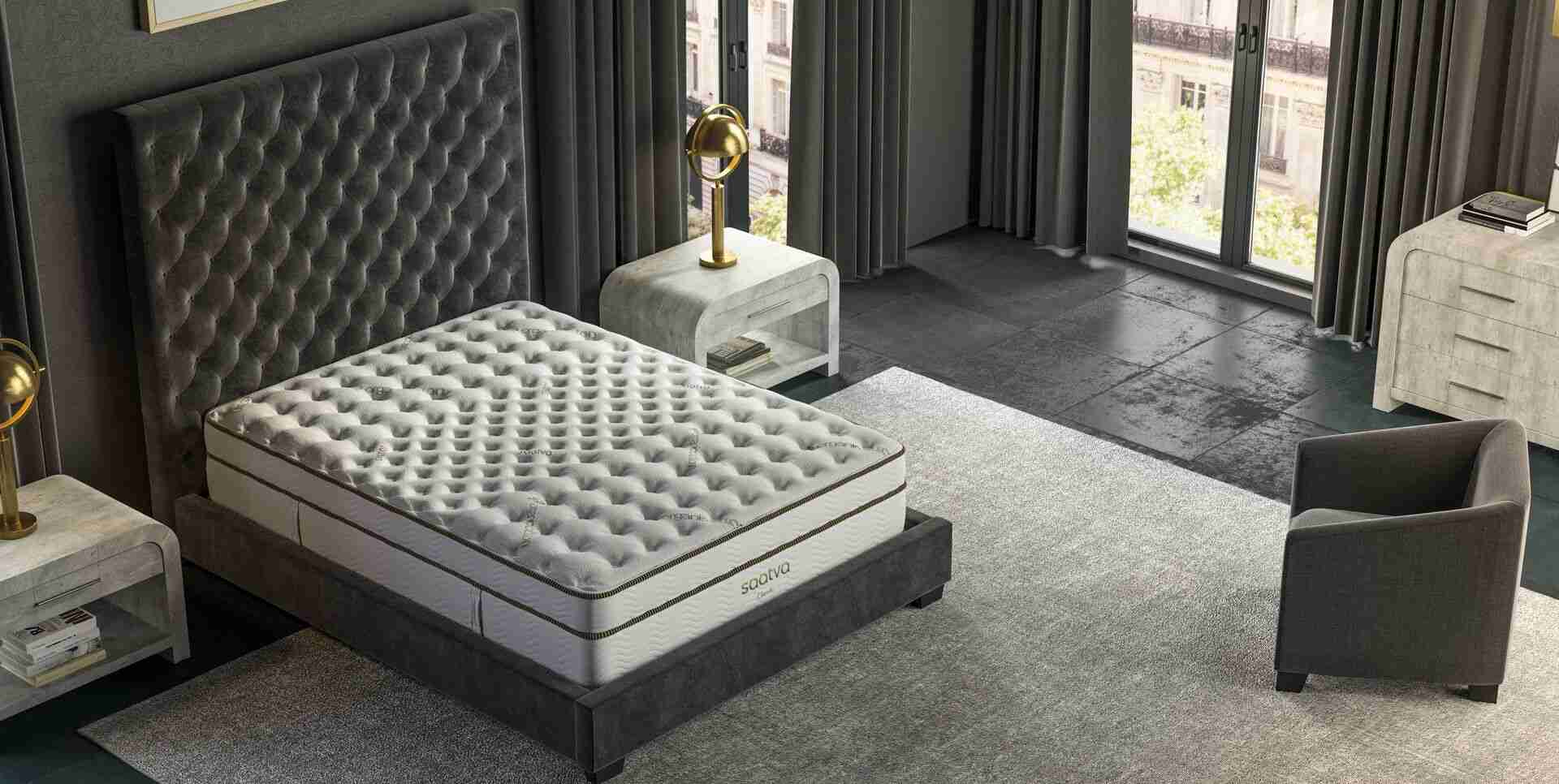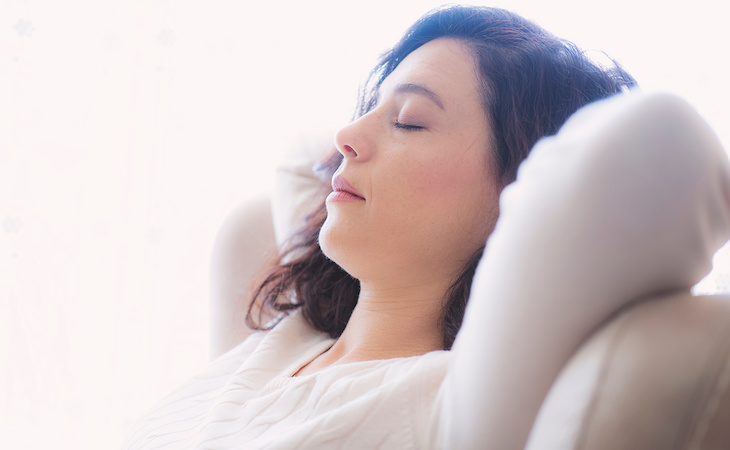A high-quality mattress can go a long way toward helping you get a good night’s sleep. But when you switch to a new mattress featuring lumbar support for your spine and components fresh from the factory, it can take some time to get used to it. In fact, it’s totally normal to experience some minor back pain at the beginning.
Keep reading to learn about the connection between a new mattress and back pain and find out why you might experience back pain after sleeping on a new mattress.
Why is my new mattress hurting my back?
There are a couple of main reasons why a new firm mattress could hurt your back.
New mattresses have an adjustment period
There’s a transition period when you go from an old unsupportive mattress to a new supportive one.
If you were previously sleeping on a less-than-terrific mattress for years and years, your body likely got used to it, even though it wasn’t all that great for your back.
When you move to a more supportive mattress, it may not feel quite as comfortable at the start, even though it’s much better for your back.
Think about how it feels to sit up straight after being hunched over for a long time-that’s similar to what happens when you switch from a saggy mattress to one that can keep your spine in a neutral, properly aligned position.
It’s worth it to be patient, though. The increased support of a new mattress will result in better spinal alignment. And research shows when your spine is in neutral alignment while you sleep, you can expect less back pain.
One study found that when participants with back pain switched to a mattress designed to accommodate their sleep position, they noticed immediate improvements.
Another study revealed that when participants with mattresses more than five years old were given new ones, they experienced less back pain, better sleep, and even decreased stress.
Plus, the right mattress will help you sleep better—and proper rest allows your body to recover so that healing can take place.
Something else to consider? Even if your old mattress wasn’t really that bad, there can still be an acclimation period when switching sleep systems.
If you’ve been accustomed to sleeping on an innerspring mattress and have switched to latex or memory foam (or vice versa), know that the characteristics of that system may cause discomfort in the beginning.
If you’re used to a natural responsiveness from springs, the hugging nature of memory foam may be a bit uncomfortable at first.
New mattresses take time to break in
Just like a good pair of shoes, a new mattress has a break-in period. Components like springs and foams can be stiff at first but will soften up and conform to your body over time. It’s a sign, in fact, that the mattress is doing its job.
If your new mattress feels too firm at the beginning, consider using a mattress topper until it’s broken in.
The right pillows can also help alleviate pain during the break-in period—and help keep back pain in check well after you’ve broken in your new mattress.
- If you’re a back sleeper: Place a small pillow beneath your knees to support your lower back and minimize back pain while you’re sleeping.
- If you’re a side sleeper: Hold a body pillow while you sleep to support your upper arm and upper knee. This will keep your spine straight while you snooze.
- If you’re a stomach sleeper: Change your sleep position! Really. If you can’t train yourself to sleep on your back or side, try placing a relatively flat pillow under your stomach to slightly elevate your pelvis and take the pressure off your lower back.
A regular stretching routine can help ease back pain caused by a new mattress too.
We tend to do a lot of reaching forward while sitting all day, so reach your head back, put your hands on the small of your lower back, and arch your back. You can also pull your knees into your chest before you get out of bed.
FAQs
Can a new mattress hurt your back? Why is your new mattress causing lower back pain? We’re answering the most commonly asked questions about new mattresses and back pain so you know what to expect—and so you can put a stop to those aches.
Can a new mattress cause back pain?
Yes, a new mattress can cause back pain temporarily. That’s because there’s a transition period when you go from an old unsupportive mattress to a new supportive mattress. New mattresses also have a break-in period. Components can be stiff at the start but will soften up and conform to your body over time.
Does your back have to adjust to a new mattress?
Yes, it takes time for your back to adjust to a new mattress. If you’ve been sleeping on your current mattress for years, your body is used to it. So when you make the move to something better for your back, it might not feel great at first.
How long does it take for your back to adjust to a new mattress?
It can take anywhere from two to four months for your back to adjust to a new mattress. That’s why many mattress companies offer an in-home trial of at least 90 days. This gives you plenty of time to break in a new mattress and allows your body to become accustomed to a new sleep surface.
What should I do if my new mattress hurts my back?
If your new mattress hurts your back, consider using a mattress topper. A mattress topper is a piece of foam—usually 1 to 3 inches thick—designed to add instant comfort to your bed.
Will a new mattress improve your back pain?
A new mattress can go a long way toward easing your existing back pain—if you choose the right one for the way you sleep.
Keep in mind, though, that a new mattress isn’t always an instant fix for back pain. It can take time for your body to adjust, especially if you’ve been sleeping on your current mattress for years.
It’s also important to note that if your back pain was being caused by something else other than your old mattress—like, say, an injury or a health condition such as arthritis—a new mattress may not completely resolve the issue.
Additionally, no one mattress is best for back pain. But whether you prefer innerspring, memory foam, latex, or another type, there are three main things to consider when shopping for a new mattress if you have back pain.
- Support: Your spine naturally curves in an S shape to properly distribute the body’s weight. That’s why it’s crucial to support your back’s natural position while you sleep. Look for a mattress with added lumbar support in the center third of the mattress, where most of your weight lies, to keep your spine in a neutral position while you sleep.
- Comfort: Let your sleep position be your guide when it comes to choosing a mattress comfort level. Research shows back sleepers do best with a medium-firm mattress to keep their spine in a neutral position. Side sleepers will want a slightly softer mattress to allow their hips to “sink in” a bit and alleviate pressure on hips and shoulders. You should avoid stomach sleeping if you have neck or back pain because it places a lot of stress on those two areas. That said, stomach sleepers who are committed to this sleep position should choose a firmer mattress for more spinal support.
- Home trial: There’s a transition period when you go from an old unsupportive mattress to a new supportive one. Look for a mattress company that stands behind its products and offers a home trial.
Get a high-quality new mattress from Saatva
Because it takes time for your body to get acclimated to a new mattress—and because new mattresses soften with use—finding a company that offers a generous home trial is key.
At Saatva, we give you 365 nights to sleep on a mattress to see if it’s right for you. All of our mattresses are handcrafted and made-to-order, which means they never sit around in a warehouse or showroom for weeks on end. Factory-fresh components can take a bit to relax and feel just right, which is why we give you plenty of time to sleep on your new mattress without the pressure of making up your mind quickly.
Check out our large selection of high-quality mattresses and take our online mattress quiz to see which one is right for you. Then, take advantage of our generous home trial and industry-leading warranty.
We also offer a range of mattress toppers to add an extra layer of comfort to your new mattress.







